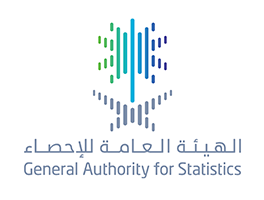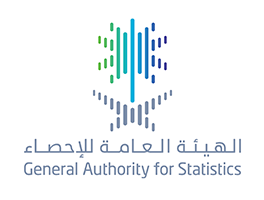General Authority for Statistics (GASTAT) Released Real Estate Price Index Q4, 2018
General Authority for Statistics (GASTAT) Released Real Estate Price Index Q4, 2018
On Thursday, 18th of Jumada al-Awwal 1440H corresponding to January 24, 2019, General Authority for Statistics(GASTAT) released the report of Real Estate Price Index, Q4 2018 on its official website www.stats.gov.sa .
The real-estate price index has recorded a decline by (2.3%) compared to the previous quarter (Q3, 2018), where the indicator of the Real Estate Price index reached (80.4) in the fourth quarter of 2018 compared to (82.3) in (Q3, 2018). This decline can be attributed to the decrease in the main sectors composing it: housing sector (2.6%), commercial sector (1.7%), and agricultural sector (0.1%) compared to the third quarter of the current year.
In fact, the housing sector witnessed an increase in the residential houses by (0.5%) during the 4th quarter of 2018 compared to the previous quarter. On the other hand, residential lands decreased by (0.6%) as well as villas (1.7%), residential buildings (0.6%), apartments (0.2%), commercial plots (0.7%) compared to the previous quarter. Commercial centers have also decreased by (0.2%) and the agricultural sector recorded a decline by (0.1%).
It is worth mentioning that real estate price index is based on record-based data available at the Ministry of Justice. This indicator is an important tool to support economic and statistical decision makers regarding the changes of property prices and future forecasts during different periods of time. Real estate price index includes three main sectors consisting of several categories of real estate: housing sector which includes the following (plot of land, building, villa, apartment and house), commercial sector includes (plot of land, building, exhibition/ commercial center and shop), and the agricultural sector with only one category which is the agricultural land.
The real estate price index aims at finding accurate real estate statistical indicators that measure the real estate market in Saudi Arabia according to internationally recognized scientific principles and standards. It also aims at filling the data gaps related to the real estate field and is considered as an important tool to support economic decision makers in this field.

الهيئة العامة للإحصاء : انخفاض الرقم القياسي العام لأسعار المستهلك لشهــــر ديسمبر 2018م بنسبة 0.3 %
GASTAT: Consumer Price Index (CPI) Decreases by 0.3% in December, 2018
On Tuesday, Jumada al-Awwal 16th, 1440 H (corresponding to January 22th, 2019), The General Authority for Statistics (GASTAT) released its monthly report of Saudi Arabia’s Consumer Price index (CPI) for December. The report was published on its official website www.stats.gov.sa.
(CPI) went down 0.3% in December compared to the previous month (November 2018).
(CPI) in Saudi Arabia decreased to (106.2) index points in December from (106.5) points in November of 2018 with 0.3% change, report showed.
The report attributed the monthly decline of the index to the declines in six of the main sections of the consumer price index, which are: food and beverage by 0.5%, housing, water, electricity, gas and other fuel by 0.5%, transport by 0.2%, home furnishing and equipment by 0.1%, communications by 0.1% and finally miscellaneous goods and services by 0.1%.
Tobacco, clothes, footwear, health, culture and entertainment, education, restaurants and hotels remained stable with no change.
On the other hand, annual change of the general CPI increased 22.2% compared to the same month last year reaching (106.2) points in December 2018 compared to (103.9) points in December 2017 with 2.2% change.
The ten sections composing the CPI contributed to the annual change, which are: transportation 12.0%, tobacco 10.2%, restaurant and hotels 7.3%, food and beverages 7.1%, home furnishing and equipment 5.0%, entertainment and culture 4.6%, health 4.0%, telecommunication 1.1%, personal goods and services 0.8% and education 0.2%.
On the other hand, two of the main sections witnessed a decline, which are: housing, water, electricity and gas section and with 5.1% as well as clothing and footwear with 3.2%.

انخفاض معدل البطالة لإجمالي السكان (سعوديون وغير سعوديين) ليصل 6%، واستقرار معدل بطالة السعوديين عند (12.9%)
GASTAT Releases Labour Market Bulletin Q2, 2018
(Saudi and Non-Saudi) Unemployment Rate Drops to 6%, and Stabilizes at 12.9% for Saudi Citizens
On Thursday 9th of Safar corresponding to October 18, 2018, GASTAT releases the Labour Market Bulletin for the 2nd quarter of 2018 on its official website (www.stats.gov.sa); the bulletin is based on the estimates of the Labour Market Survey that is conducted by GASTAT on a quarterly basis as well as the administrative records available at the related entities (Ministry of Labour and Social Development, Ministry of Civil Affairs, General Organization for Social Insurance, Human Resources Development Fund, and National Information Center).
The Bulletin’s results showed a decrease in the number of total employees in the 2nd quarter based on the administrative records available in Saudi Arabia where the number reached (13.018.066) individuals compared to (13.333.513) individuals in the previous quarter; about (315.447) individuals from the previous quarter. The number of Saudi employees based on the administrative records edged down by (25.066) individuals where it reached (3.125.343) individuals compared to (3.150.409) individuals in the previous quarter. On the other hand, the number of Saudi male employees decreased by (14.787) individuals and the number of Saudi female employees edged down by (10.279) individuals.
According to the estimates of 2nd quarter 2018 survey, the economic participation rate of total population (15 years and above) rose to (56.2%) compared to (55.5%) in the previous quarter. Saudi economic participation increased by (42.0%) compared to (41.9%) in the previous quarter. Saudi male economic participation rate stabilized at (63.5%); on contrary, Saudi female economic participation edged up to (19.6%) compared to (19.5%) in the previous quarter.
Furthermore, the data of the Labour Market Bulletin Q2,2018 showed a stability in the unemployment rate for total Saudis (15 years and above) based on the survey’s estimates compared to the previous quarter where it reached (12.9%). On the other hand, the results also showed a decrease in the unemployment rate for the total population where it reached (6.0%) compared to (6.1%) in the first quarter of 2018; a decrease of (0.1%). In contrast, the unemployment rate of Saudi females edged up to (31.1%) compared to (30.9%) in the previous quarter; however, the unemployment rate of Saudi males stabilized at (7.6%).
The number of Saudi jobseekers for the 2nd quarter of 2018 rose to (1.118.801) individuals based on the administrative records available in Saudi Arabia compared to (1.072.162) individuals in the previous quarter; with an increase of (46.639) individuals most of them are bachelor holders (42.894) individuals. On the other hand, the number of Saudi female jobseekers reached (34.238) jobseekers. It is worth mentioning that the criteria of measuring the number of jobseekers will be updated in the coming Labour Market Bulletin (Q3,2018) and that is based on a study that was conducted for job applicants through (Jadarh, Sa’ed, Taqat) by distributing a survey to job applicants in order to update their data.
GASTAT has defined jobseekers as Saudi individuals (males and females) registered in job seeking programs of the Ministry of Civil Affairs (Jadarh and Sa’ed) as well as Human Resources Development Fund (Hafez) where they entered their personal data, qualifications, experiences, and CVs electronically.
In fact, jobseekers included in the administrative records are not subjected to the internationally recognized criteria and conditions of the International Labor Organization (ILO); hence, not all of them are considered unemployed individuals. Therefore, not every jobseeker is an unemployed individual; they may be look for a work while still working in another job, as in the case of jobseekers in the government sector where they work for their own business and not registered as employees in the governmental administrative records (Civil Affairs, Social Insurance, commercial registers, and municipal licenses) such as those who work for their own business outside the establishments.

الهيئة العامة للإحصاء تصدر دليل التعريفات والمفاهيم والمصطلحات الإحصائية
Coinciding with the Gulf Statistics Day
GASTAT Releases the Manual of Statistical Definitions, Concepts and Terms
The General Authority for Statistics (GASTAT) will participate in the events of the gulf statistical day which occurs on December 24th of each year. The slogan of this year is “Statistics Towards Sustainable Development”. It emphasizes the role of the statistical centers and authorities of the Gulf Cooperation Council (GCC) countries in the sustainable development industry through providing accurate data of statistical indicators. The aim of the Gulf Statistics day is to highlight the achievements and challenges of the statistical work in the region, raise awareness of the importance and role of statistics in the social and economic development of GCC countries, emphasize the importance of the society cooperation with statisticians, highlight the importance that GCC countries attach to statistical work.
GASTAT official spokesman, Mr. Taiseer Almofarrej, explained that coinciding with this occasion, GASTAT releases the Manual of Statistical Definitions, Concepts and terms used in GASTAT. The manual includes more than 1200 definitions. It is a rich scientific work presenting the key terms and concepts of the statistical products issued by GASTAT to facilitate handling these products.
This guide is based on the standardization of definitions, concepts and statistical terminology used in the GCC countries. GASTAT updated and added some new concepts in order to contribute in enhancing transparency in statistical work, as well as to raise awareness to all producers and users of statistical data, information and indicators.
Mr. Almofarrej added that the manual covers the concepts and terms used in the field of statistics including, terms related to the general population and housing census, agricultural census and its concepts, population and vital statistics, government services statistics, geographic statistics, National concepts accounts statistics concepts, foreign trade, prices statistics, business and industry statistics and other statistical terms and concepts used in GASTAT.
It is worth mentioning that GASTAT is keen to enhance and enrich the statistical arabic content, provide statistical linguistic culture to interested individuals and specialists and disseminate vital statistical information and indicators about Saudi Arabia.
You can view the Manual of Statistical Definitions, Concepts and Terms on this link:
https://www.stats.gov.sa/ar/992
